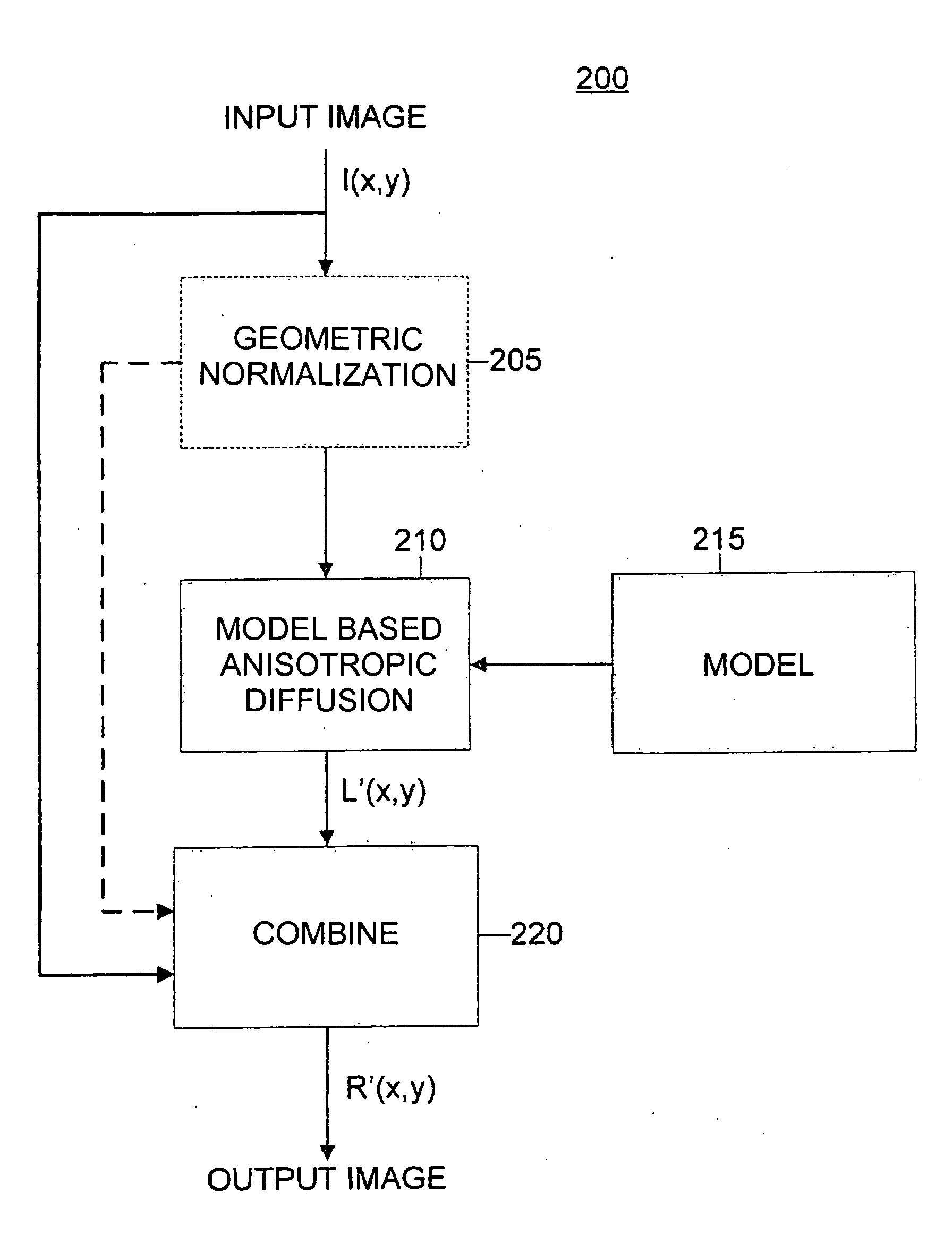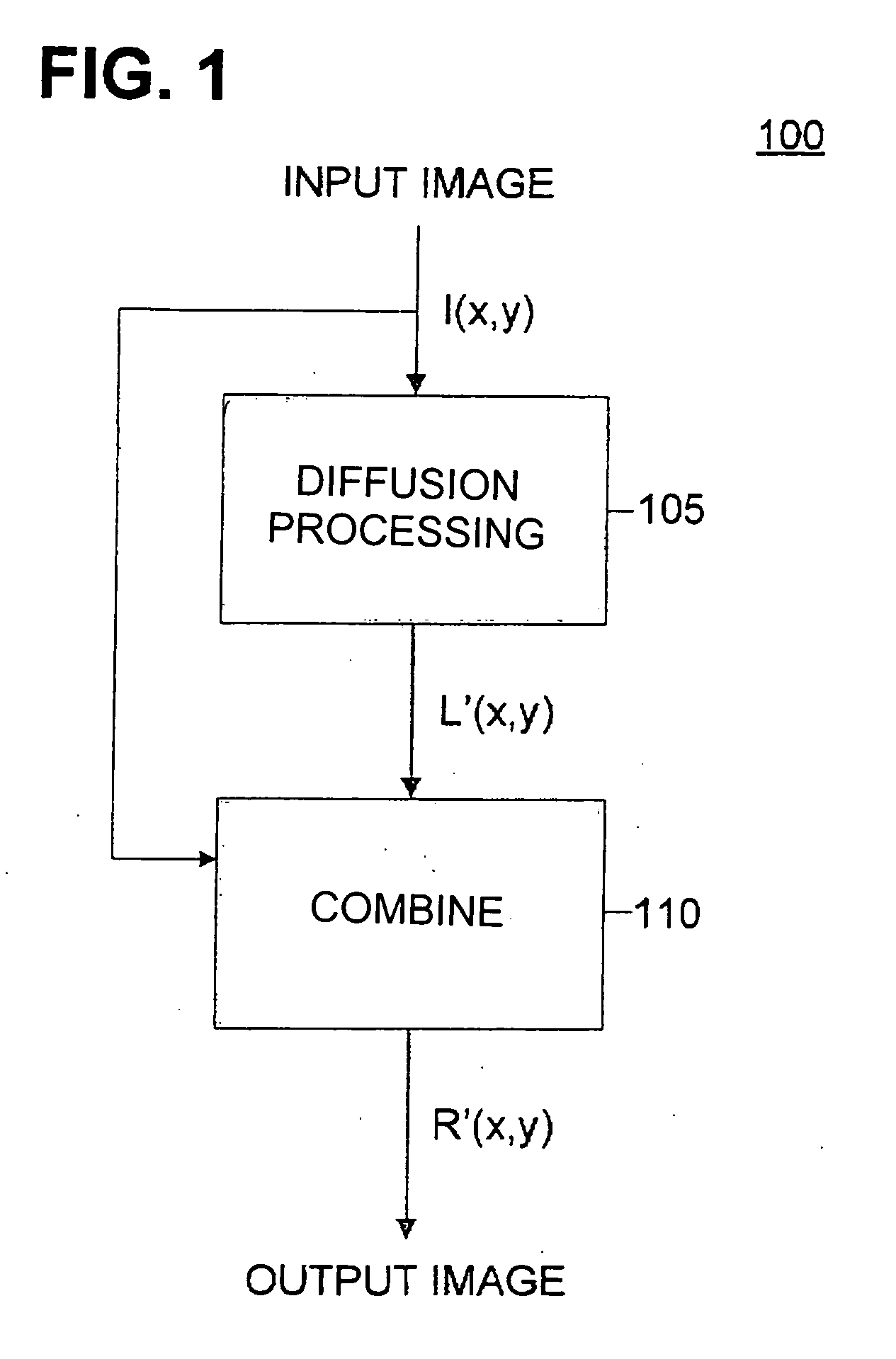Method and apparatus for diffusion based illumination normalization
- Summary
- Abstract
- Description
- Claims
- Application Information
AI Technical Summary
Problems solved by technology
Method used
Image
Examples
Embodiment Construction
[0017]Aspects of the invention are more specifically set forth in the following description with reference to the appended figures. Although the detailed embodiments described below relate to face recognition or verification, principles of the present invention described herein may also be applied to different object types appearing in digital images.
[0018]Generally speaking, an input image I(x,y) may be conceptualized as the product of a reflectance image R(x,y) and lighting image L(x,y); mathematically speaking, I(x,y)=R(x,y)*L(x,y), where (*) denotes a pixel-by-pixel product of two images. The reflectance image may be illumination invariant, and contrast variations, textures, real edges, etc. may be caused by the underling structure of the contents and / or objects (e.g., faces) represented within the image. The lighting image may be the result of contrast variations, such as, for example, spurious edges, resulting from the illumination of the contents and / or objects. For example, ...
PUM
 Login to View More
Login to View More Abstract
Description
Claims
Application Information
 Login to View More
Login to View More - R&D
- Intellectual Property
- Life Sciences
- Materials
- Tech Scout
- Unparalleled Data Quality
- Higher Quality Content
- 60% Fewer Hallucinations
Browse by: Latest US Patents, China's latest patents, Technical Efficacy Thesaurus, Application Domain, Technology Topic, Popular Technical Reports.
© 2025 PatSnap. All rights reserved.Legal|Privacy policy|Modern Slavery Act Transparency Statement|Sitemap|About US| Contact US: help@patsnap.com



